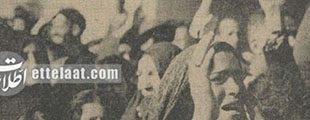Second Period: From Constitutional Revolution to the Fire of 1303 AH
During this era, the building underwent its first significant architectural expansion. Under the supervision of Jafar Khan Memar Bashi, a new wing was constructed on the western side, replacing an old bathhouse. The new structure, following the urban architectural trends of Tehran, incorporated European design elements while retaining Iranian craftsmanship. The brickwork and ornamental detailing signified the blending of East and West.
Third Period: Reza Shah’s Modernization and the Achaemenid Facade
The most transformative architectural phase occurred during Reza Shah’s reign. Between 1310 and 1313 AH, the building was extensively remodeled. The old entrance was replaced, and a grand new columned façade, inspired by the French National Assembly, was constructed. Internally, the parliament hall was redesigned to accommodate more representatives and to reflect a modern, state-oriented image.
In a gesture to Iran’s ancient past, architect Hassan Taherzadeh was commissioned to design the northern façade, which drew upon Achaemenid architectural motifs, particularly those seen at Persepolis. This hybridization of European classicism and ancient Persian monumentalism illustrated Reza Shah’s ideological project of national identity rooted in pre-Islamic heritage.
Fourth Period: Mohammad Reza Shah’s Expansion and Neglect
The second Pahlavi monarch embarked on further expansion projects. A new northern building was constructed to house additional sessions and administrative offices. However, this building saw limited use in later years and was effectively abandoned before the 1979 Revolution. The period also saw extensive but often destructive renovations, including the removal of heritage sections, the addition of modern facades, and the installation of extensive ornamentation. The southern façade was completely transformed during this time.
Fifth Period: Post-Revolutionary Damage, Renovation, and Modern Parliament Design
After the Revolution, the original Baharestan building fell into a period of neglect. Maintenance was minimal, and damage from time and war exacerbated deterioration. The most notable event was the Iraqi missile attack during the Iran-Iraq War, which struck near the building in March 1987, causing the roof of the entrance hall to collapse.
A fire in December 1934 had already caused serious structural damage, which had not been properly addressed. Eventually, in 1995, the Bavand Consulting Engineers Group was commissioned to restore the building. Their work included the development of exhibition spaces, guest reception areas, and conference rooms.

